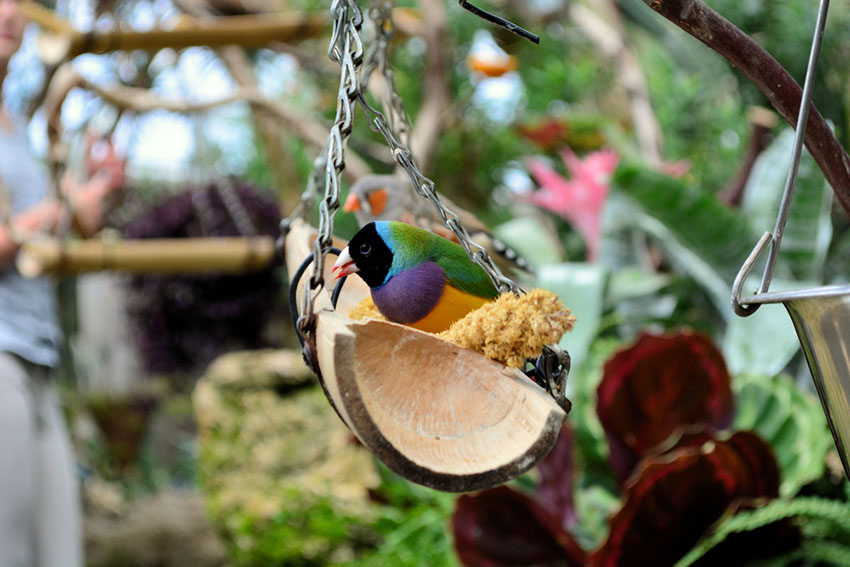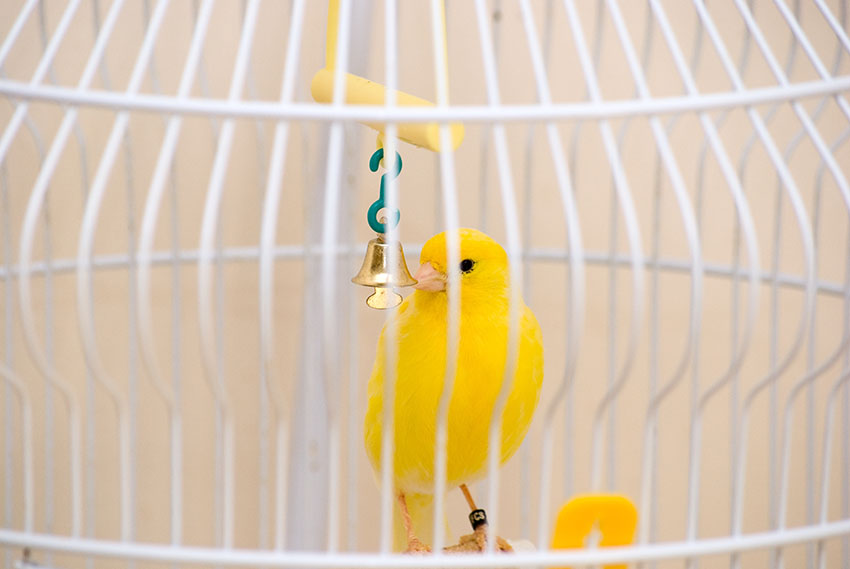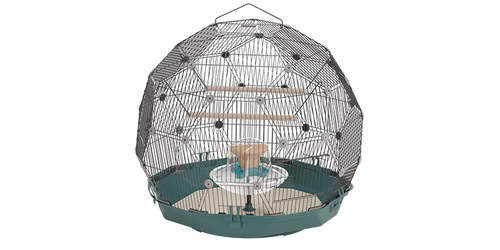Now, although pet finches do not need toys in the same way that members of the parrot family do, they still enjoy the stimulation from playing with items in their cages. There are many toys available in pet shops, but lots of these toys can simply be made at home.
BranchesBefore gathering any branches to make perches out of, be sure to check the list of suitable woods in the Safe Wood for birds section, above. Pick out branches that have leaves or buds on them, these can be any size; it doesn’t really matter - just make sure that it will fit in your cage. The wood will then need to be thoroughly cleaned, and doused in some boiling water to remove any bacteria or mites that may have survived the initial washing phase. Dry the wood in a cool oven before placing it into the cage. Your finches will enjoy nibbling on the bark and shoots, and the wood will help regulate their nail growth.
Other types of perch.Birds explore the world with their beaks and feet. Perches made out of rope (be sure that it’s tightly wound so that your birds don’t get their toes caught in it), a plastic ring, or a chain or wooden/plastic rings will all add to the variety of the cage.

A well-equipped cage = happy birds
Pine cones Pine Cones make for a great addition to any cage, but there are a few things you must do before introducing one into the cage,:
- You must use freshly fallen cones
- The stalk end needs to be trimmed away, with no trace of the sticky pine resin left.
- A way to check for resin is to put the cones into a warm oven for 10 minutes. If any resin starts bubbling out, the pine cone is not suitable for the cage.
- The coens need to come from trees that are safe for finches, a few suitable trees are the Douglas fir, larch, Norway spruce, silver fir, Scots pine, and the non-conifer alder and birch species, all of which produce cones.
- Suspend the cones from the top of the cage using string. Alternatively you can scatter them across the bottom of the cage.
Lattice Balls
These are readily available in most pet-shops, usually made from plastic or twigs. If you feel up to it you can make one yourself from safe wood. The lattices should be the size of ping-pong balls, and you can place food into the entrance for the birds to get.
SwingsAll finches will enjoy a swing, a homemade one from wood and rope ties is ideal.

Canaries enjoy playing with bells
BellsWhilst finches are not as prone to bell addiction as the budgie is, they will still enjoy playing with them. Bells should be a solid bodied shape with a single opening, rather than the jingle-type bells which can make a bird snag its toe. Ropes.
Whilst they are much more synonymous with parrots, ropes make for a great, and also very stimulating, toy for your pet finches. Be absolutely sure that all ropes you plan on putting in the cage are tightly wound, if the rope is too loose your birds could snag a toe in there, possibly breaking something. Finches will use the ropes as a trapeze, sometimes even hanging upside down to explore their surroundings from another angle.
Nesting MaterialYou may also see nesting material sold as “charpie”, this is just another name for it. Even if you hen birds won’t be mating and laying eggs, the urge to gather materials and build a nest is still very strong, especially in mating season. If you provide a mixture of leaves, moss and even bits of paper in the cage, your hen birds will happily spend hours rummaging around picking out their favourite bits. If there isn’t actually any room for your bird to build a nest, don’t bother with providing the materials as this will only frustrate her.



Comments
David, 8 August 2020
Thanks for all these intresting facts
Beryl, 28 April 2020
I had two canaries a few years ago and now I'm not a cat owner nor will I be in the future I am looking to have get myself a canary a singing canary, I've loved looking through your very informative pages and I hope it's okay for me to print your pages off I've found it to be very good advice on everything Thank You